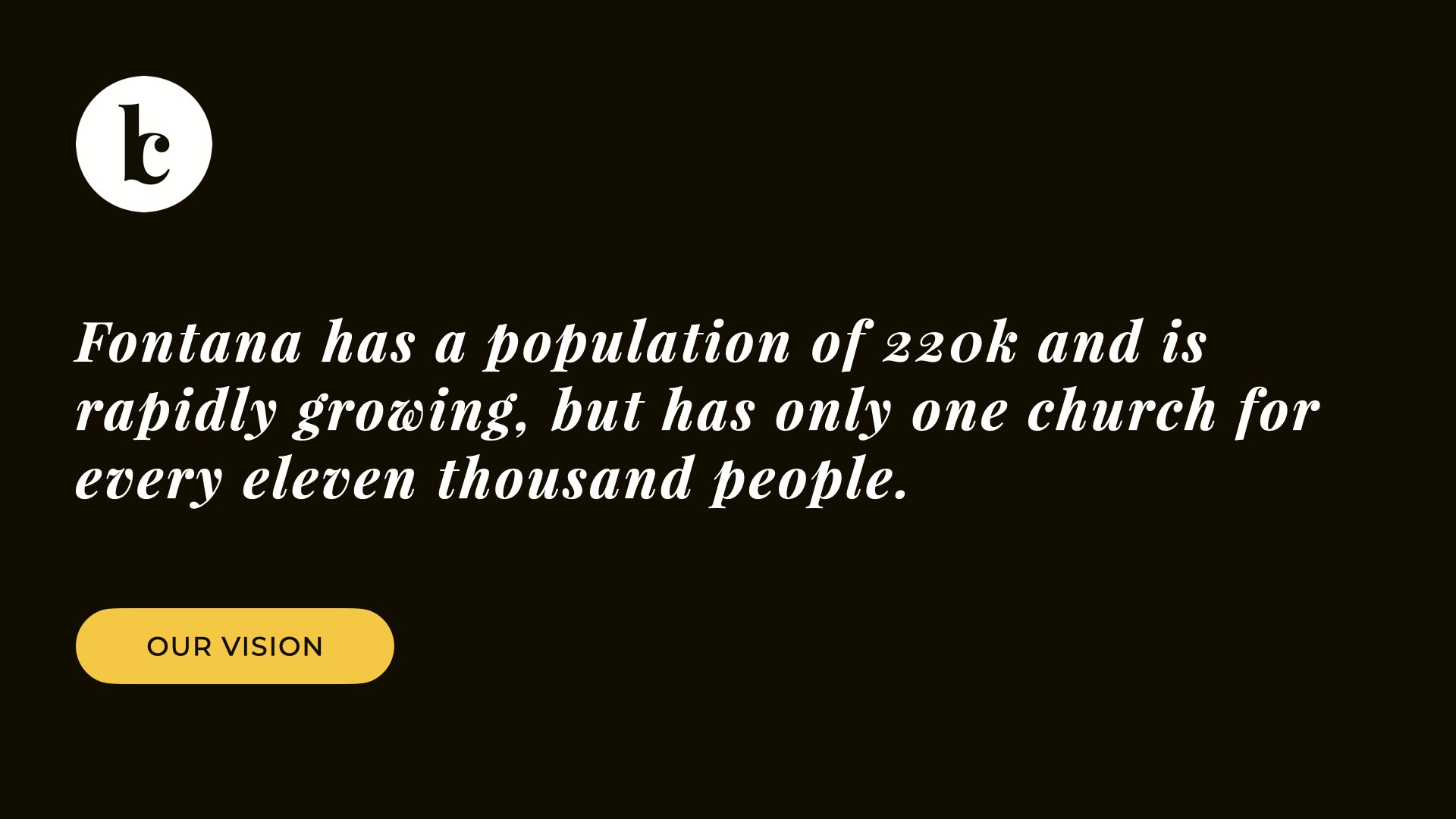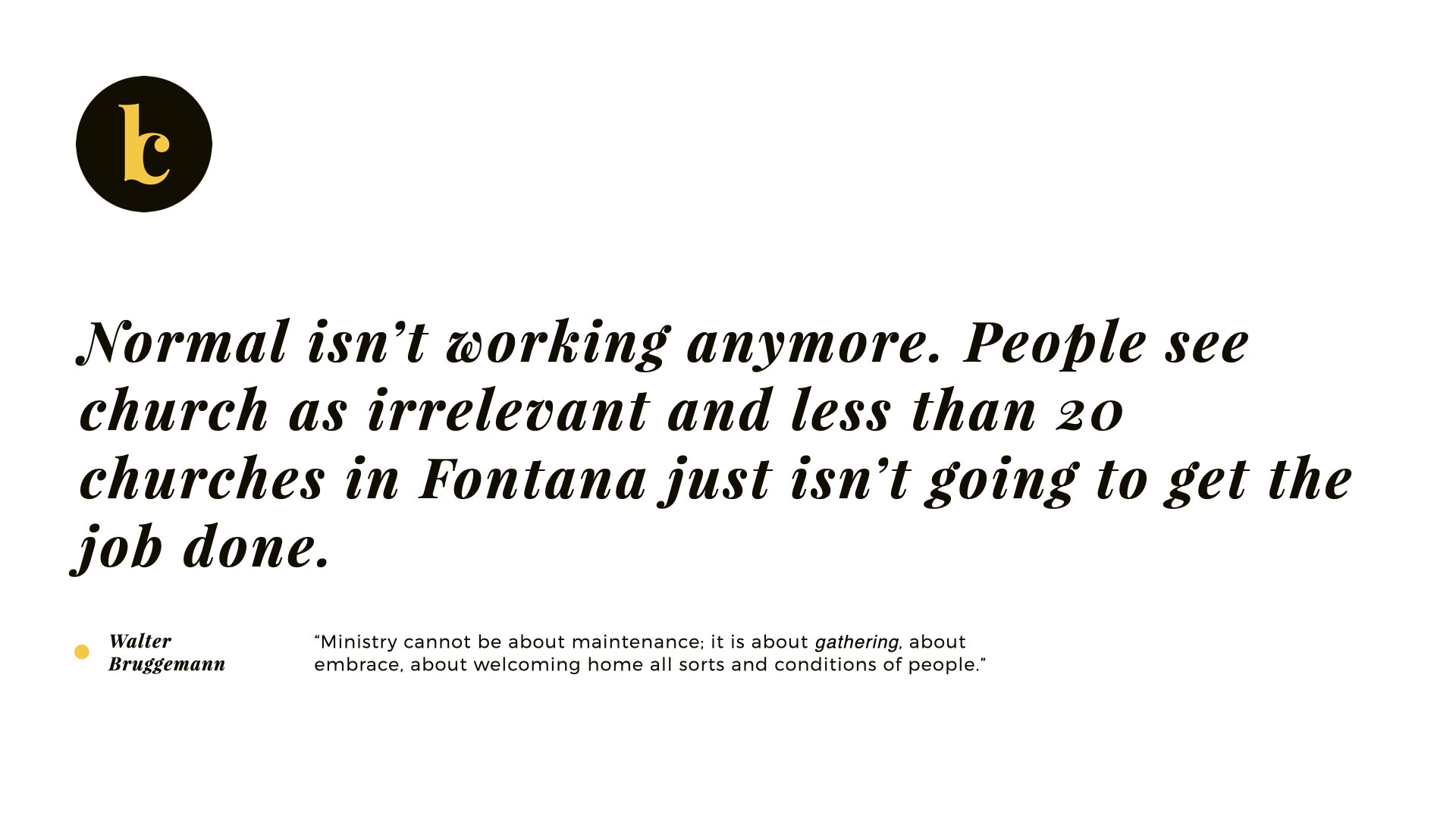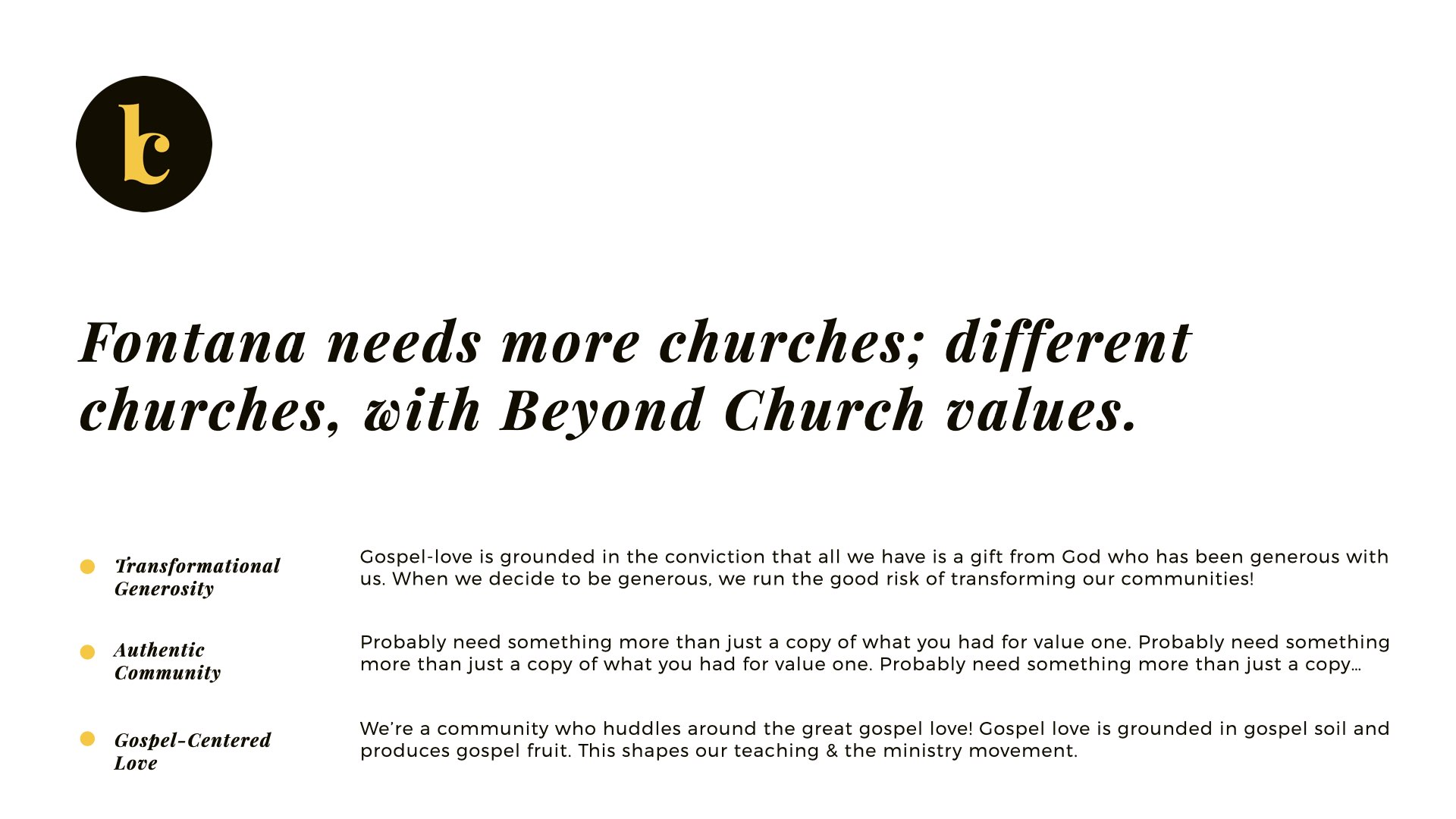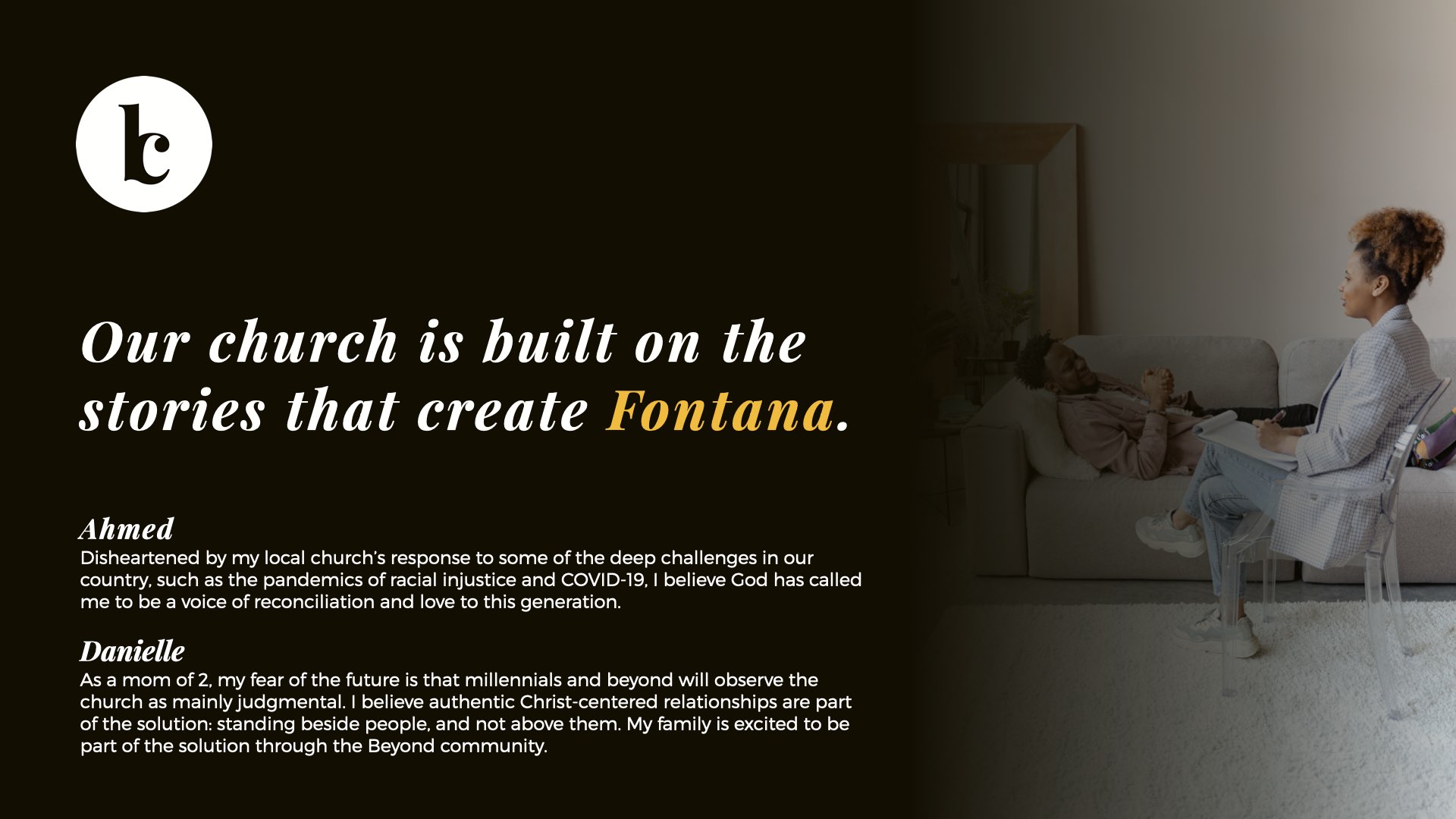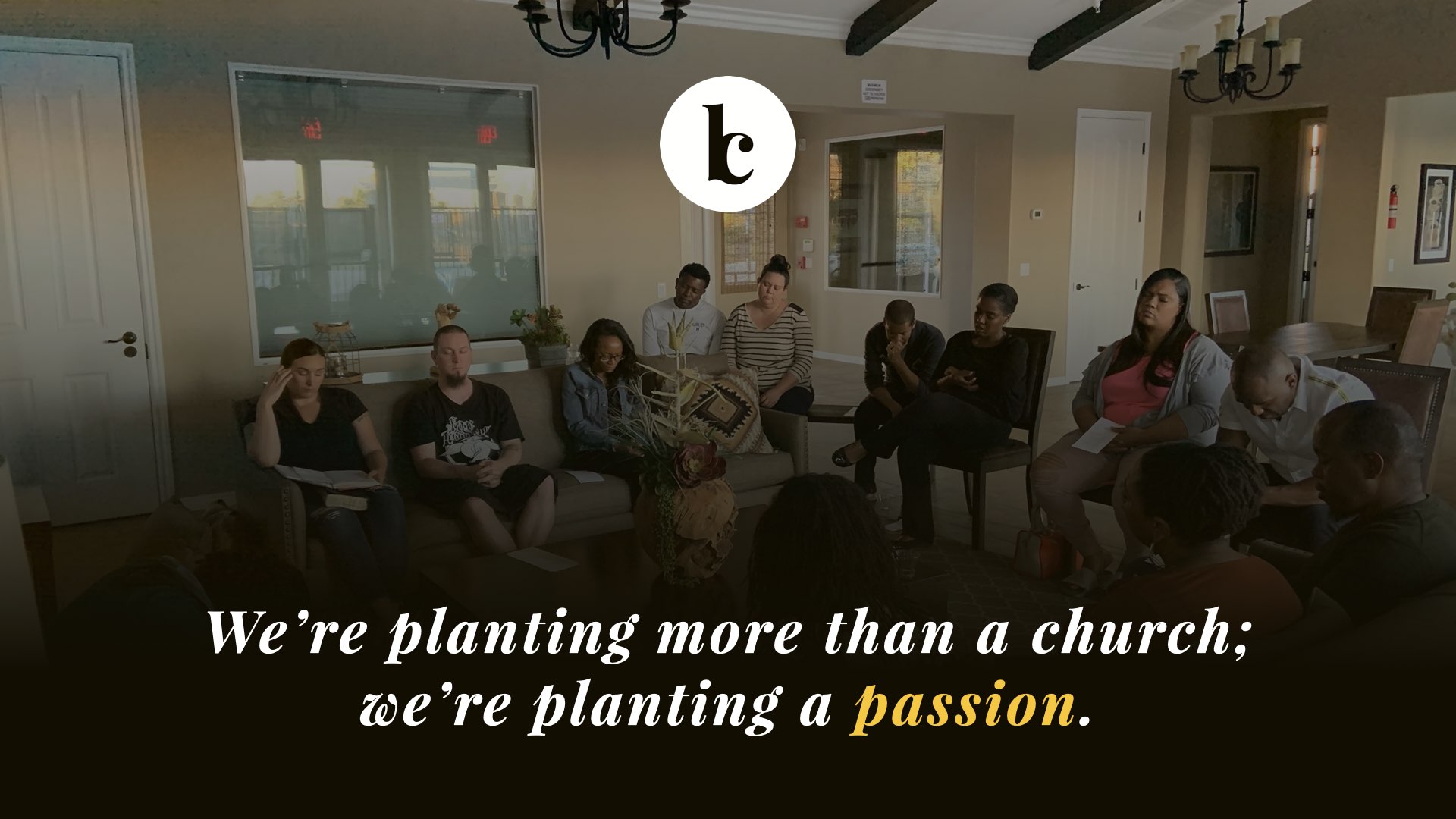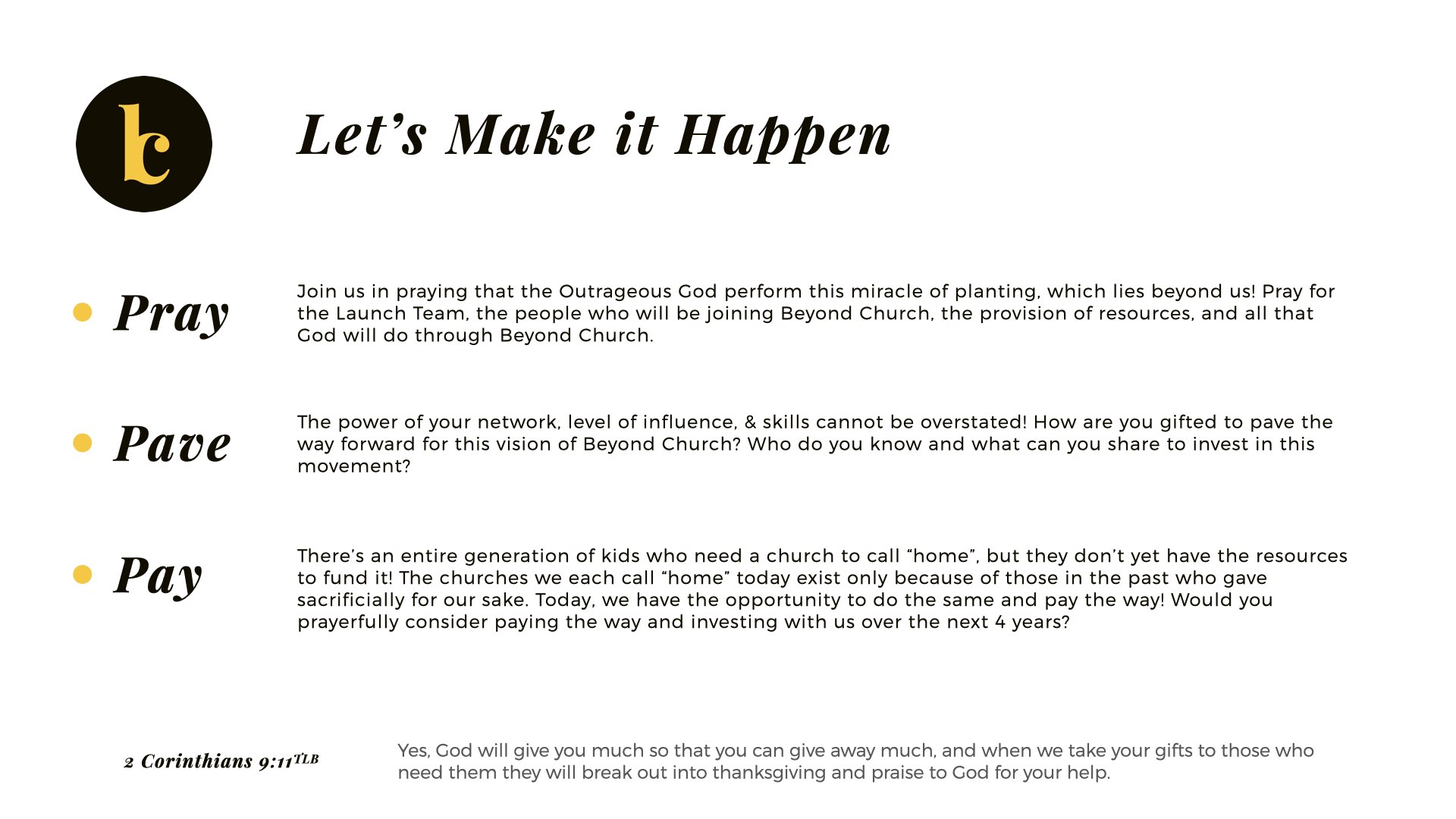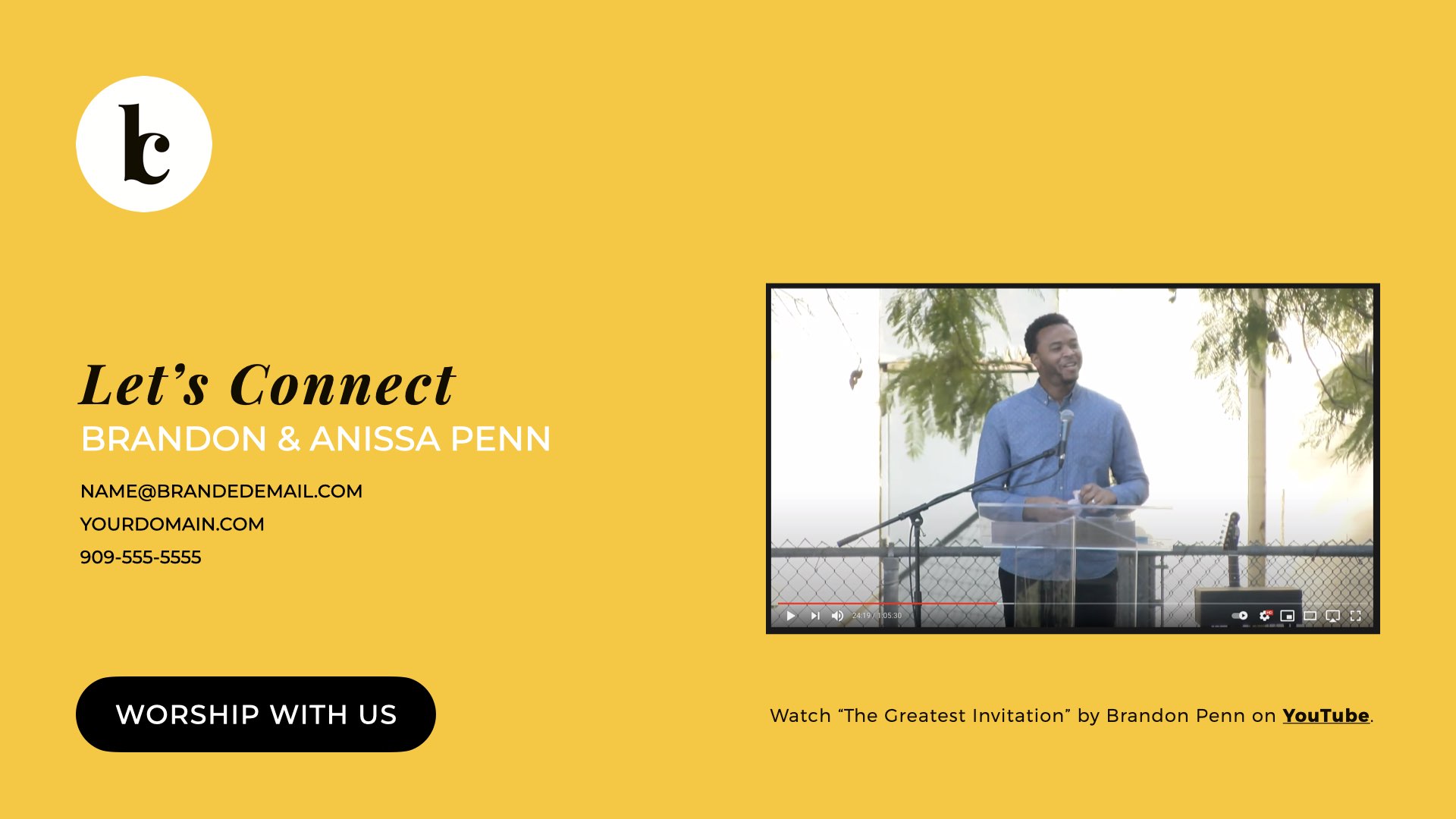By Russ Cantu: You spent $5000 and got nothing in return.
You heard it somewhere —a coach, mentor, pier, start up bro— that you needed a pitch deck. You were told to hire a designer, run a high quality print of their developed deck, and distribute it to prospective investors.
Fail. Whale.
And it’s not even your fault.
Pitch decks have been a thing for decades now, but how we think about them needs to significantly change. I’ve been developing decks for decades: from start-ups to church plants, investment decks for pharmaceuticals and medical device manufacturers, and even some dream decks for friends.
Pitch decks aren’t bad, but the process is fundamentally broken.
It’s time to fix it.
Meet Brandon Penn
Brandon is a church planter starting a church in Fontana, Ca. It’s in LA and has a population of 220,000 people and less than twenty churches. The system is broken and what’s there just isn’t working. Brandon came to me and asked if I could help him design and develop their church plant’s deck.
I told him no.
Well, I told him no… but only no because we needed to go about this differently. The way we raised money ten years ago is not the same today, so our tactics need to change to meet our context.
So I made him a deal.
I would help him design and develop his deck, under one condition: we make it free for everyone. We would knock this out for him and his church, but then we would make the Keynote file, PDF, and article walkthrough available to everyone, for free.
He agreed, and here we are.
Three Pitch Decks Problems
Like I said, pitch decks aren’t bad; the process is just broken. What we want to do is think through a few aspects of the process so we can wrap our head around the problem and push forward.
Pitch Deck Problems
No matter how good a designer is, they’re not you. While there are some world-class designers I could recommend to you, most designers design for design, not conversion. When you are designing a deck for investors, your target market cares more about substance than flash. They want to know you have a successful track record with market opportunity, not that your deck looked better than the other guy.
In addition to designer problems, you will most likely run into design problems. These two are not the same. Assume now that your designer is amazing, they can create a great initial pitch deck template (aka Slide Deck), and they truly understand you. Assume they get your story. But never assume they know how to lay it out properly for you, in alignment with your business plan. Again, they’re used to designing for design’s sake, not you. You need to design for conversions, and that’s a completely different ball game.
Principles to remember when designing your deck:
Share your wins. Your last success will indicate future success.
Less is more. Don’t say too much and narrow your focus on achieving your goals.
Design to multiple learning styles: i.e. visual, logical, kinesthetic.
Everything has a next step. Every point has a natural onramp for potential investors.
Pitch Deck Development Problems
Now that you’ve designed your deck, how do you share your story? Inherently, this is the most difficult part of the equation. While we will get to a walk-through of an example shortly, I want to run down some development problems you may run into and what you can do to avoid letting them slow you down.
“It looks good, but it doesn’t feel good.”
While a designer will bring the heat, they can never bring the feels without you. You must permeate every aspect of your deck. What is the problem you are addressing with your church plant and how are you uniquely prepared to meet this moment? This is the question you must answer on every page. It’s on you, and while it is certainly daunting, it is not impossible.
Principles to remember when developing your deck:
Address problems head on. Name names and have a solution ready.
Be your own hero. People will be sold on you before they’re sold on your church.
Elevate your key team leaders. The people you have are the people you are targeting.
Don’t compromise. Your church is your baby. It’s unique and not cookie-cutter.
Be specific and measurable. Know your business model and key metrics of success.
Own it. This isn’t a church planting organization’s start-up; it’s your company vision.
Remember: You’re called to be faithful, not plant a church.
Pitch Deck Distribution Problems
This is the one that kills me every time. You paid a designer, you spent weeks outlining your story, and now you need to pay to print… or do you? This is it; THIS is the thing that keeps me up at night. It honestly frustrates me to no end.
Can we talk about money for a moment?
When you hire a good designer, you can expect to pay around $1000 for them to design your pitch deck. Assume you hire a designer who knows the investment space, who can interpret your story well, and who will lay it for conversion; expect to pay around $3000. But design costs aren’t the only thing we are talking about here. What about your time and energy? When you hire a designer, you are feeding them daily for weeks. This thing takes time. Because time is money, let’s just put an equal amount on it and price your time at the same rate as your designer’s between $1000 and $3000. So far, we are talking about a $2000 to $6000 hit to your church plant, most likely before you have investors (and before you even considered hiring a pitch deck writer).
You’re six thousand into this thing, and now you need to print. Ugh. Seriously, who prints anything anymore? Someone somewhere told you that investors need this, so you have to do it, right? Not a chance. Investors don’t give a rip. They want to know you’ve been successful and will be successful now. If you can write your story and a plan on a napkin, transfer that to a single email, and break it down over the course of a fifteen page deck, then you’re solid. But if you’re sold on print, you’re dropping between $1000 – $2000 every run. Since your plan is a living document, you will need a few runs along the way. Now your total financial hit is coming in between $3000 and $8000, but likely more depending on market size and capital to be raised. Print is not dead, but it is not right for you. So what works? Well, here’s what we do every time for start-ups.
Principles we remember when distributing decks:
Pitch Deck developed in Keynote or PowerPoint. Makes it simple for users to edit.
PDF exports for potential investors. Easy to view online or send via email.
Tactical Cards for handouts. Glossy on top and matte on back, makes people want to turn it over. Slap an URL on there for downloads and brand it alongside your deck and you’re solid. It’s a cheap run and instantly effective. Plus, if people throw it in the garbage, you won’t be diving into the can to rescue that printed gold.
Ultimately, your distribution plan is 50% of your design plan. How you disseminate your story to potential users or investors will determine how you raise capital. If you can accomplish this part of the puzzle, your audience will see a clearer picture and you will have more money in your pocket for your plant. And if that doesn’t show investors how you are managing money, I don’t know what will. It’s a brave new world, and they’re already ahead of the game. They want to invest in you. They want to reach your addressable market. It’s your job to make it easy for them to do so.
How to Create a Great Investor Pitch Deck for Startups Seeking Financing
Like I said, pitch decks aren’t bad; the process is just broken. What we want to do is think differently about this, from the designer to the design, the process and financials, and how to make the most of your moment. So let’s bring Brandon back in, so we can walk through his deck, and you can see how it works for him, as well as a few presentation tips so you can walk away with valuable insight and actionable items.
Beyond Church and Their Pitch Deck Outline
Branded Cover Slide with logo.
Mission Statement
Reachable Market and Our Problem to Fix
Current Growth Metrics and Market Validation
Introduction of Opportunity
Introduction of Startup Founders
Introduction of Business Model – Values
Introduction of Target Users or User Testimonials
Continuation of Target Users or User Testimonials
Introduction of Team with Focus
A-Round Pitch Deck Financials with Financial Forecast
Stage Process and Financial Application
Contextualization of Current Crisis and Application
Investment Opportunities
How to Connect with Brandon and Beyond Church
Branded Cover Slide with Logo
Your first slide is not the time to pitch your product or sell your services. Potential investors care more about you than they do your “sell”, so start off your pitch by sharing who you are and why you are taking their time. This is an opportunity for you to make them a part of your team before they hear what you’re doing, so sell them on you and it will be easier to sell them on your plant.
Mission Statement
Your mission is the framework that drives your business. From inception to implementation, your mission statement is how you will grow your team, how you attract your audience, and how you grow over time. Share how and why your mission statement is not only important to you, but instrumental to your success.
Reachable Market and Our Problem to Fix
While most cities lack enough church resources to meet the need, Brandon Penn and Fontana are unique. Fontana is an underserved and under-resourced population, so the fact that there are so few churches to adequately serve the city should be drawn out and made a central focus, not just here, but throughout the presentation.
Current Growth Metrics and Market Validation
Past is prologue, so Brandon is going to discuss how he’s been successful in the past and prove he will be successful here as Fontana is drowning without enough people to serve the city. This is where he will start discussing the implementation of the business model, his current audience, and the people that are currently on board (as team members and investors).
Introduction of Opportunity
Brandon is bent toward justice, not as a pocket passion, but as a guiding life principle. As Fontana has a clear and obvious need, and as his team is ready to meet the moment, he will lay the foundation here for the opportunity to be met by those in the room. For him, God’s salvation is not just a gift for him, but one for everyone. Because of that, he’s encouraging his audience to participate in immediately actionable items.
Introduction of Startup Founders
In the initial stage of development, the focus will ultimately be on the shoulders of those who lead the early church. This is one of the reasons why church plant coaches emphasize the need for the founding pastor to preach every weekend for the first six months. These initial months are all about attraction, so Brandon must sell you on him, as wella s his family. It’s a lot to handle, but it’s what needs to be done. No pressure.
Introduction of Business Model and Your Values
Brandon is now going to share the business model (in expanded terms) but also share the guide rails of his plan: values. One caveat here: you don’t determine your values, you discover them. While Brandon has three values here, he also understands that values are malleable and may need to flex over time as his audience morphs into who God needs them to be for their community.
Introduction of Target Users or User Testimonials
One of the fin discussion items I often have with clients is persona types, not because we want to have a “perfect person” we want to reach, but because we want to have multiple moving targets we seek to market to. People are fluid according to their in-the-moment context, so persona types must go deeper than the surface level of a single mother of three kids.
Continuation of Target Users or User Testimonials
Like before, we are laying out the persona types we are targeting our reach towards, but we are also sharing who we have already reached. This is where past success meets current users. Don’t just share your hope for people to reach; share who you have already reached and how you are making their lives better.
Introduction of Team with Focus
For Brandon, his new church startup is not about a new church for Fontana. Anyone can build a church, but Brandon is building a passion. Buildings and worship services will only get you so far. In today’s climate, passion outranks presentation (thank God). When all is said and done, Beyond Church’s end product will be a passionate people who just so happen to meet in a building every week.
A-Round Pitch Deck Financials with Financial Forecast
Part of the strategy here is to speak the language of everyone in the room. While some will be attracted to stories, others will be moved by finances. It’s your job to speak to everyone. Give a description of your need, where you are at, and forecast it a few years out. Just like you created a pitch deck outline for your designer, you need to create a financial overview for investors.
Stage Process and Financial Application
Every church and organization is different. While some angel investors may be moved by stories and financials, others may be moved by specific things you are spending money towards. Larry Osborne talks about this in his pockets presentation. While some may give their tithe out of one pocket and give to a need out of another, they normally only have one more pocket to give to: their individual passion.
Contextualization of Current Crisis and Application
Covid sucks. Losing millions around the world and hundreds of thousands here at home has been an enormous loss. Churches that specifically address the wounds of Covid and assist in the recovery of our cities will be better positioned to serve their cities for generations, than those who chose to go back to business (and politics) as usual. Brandon has a plan, and it’s working.
Investment Opportunities
We’ve shared the problem, we’ve shared possible solutions, and Brandon has shared stories and user testimonials. You’ve seen the financials and our forecast, and maybe you’re sold on the vision. This is the time to give people their next right step. In this case, Beyond Church is specifically looking for three people: givers, prayers, and servers. They need money, they need people who will encourage them through prayer, and they need people with a passion who want to serve Fontana. All Brandon needs to do is make their next right step clear and simple.
How to Connect with Brandon and Beyond Church
The last step of your presentation is to continue the conversation. This is the beginning of a years-long relationship that requires trust and communication. Once you make the ask (and please, don’t forget to go for the big ask), you need to stay present in their lives. Investors are giving you their hard earned time, resources, and finances, but you must be the one to nurture the relationship.
Let’s put a bow on this pitch deck.
For those of you who have been wondering “what is a pitch deck” and “how to slide deck”, I hope this guide has provided you with clear next steps to accomplish your goal. This resource is free now and will continue to be well into the future. I have included individual slides of the presentation, as well as a working file for you in Keynote and PowerPoint, in addition to a smaller file size PDF (with active links). I would encourage you to save yourself some money and use this pitch deck template instead of hiring a designer and printing a full run of vision pieces. And if you need help along the way, reach out and I will do everything I can to help make you successful.
The post How to Effectively Share Your Church Story to Investors [Pitch Deck] appeared first on CATALYST CHURCH CREATIVE.
Source: How to Effectively Share Your Church Story to Investors [Pitch Deck]



